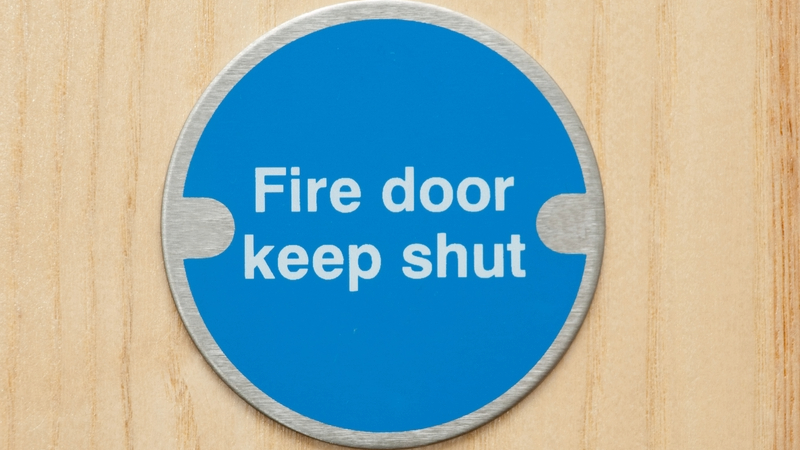Stephanie Geesink and Dom Turner-Harriss examine the amendments introduced to the fire safety regulations under the new Building Safety Act.

On 1 October 2023, the provisions of section 156 of the Building Safety Act 2022 (BSA) came into force, introducing a number of changes to the Regulatory Reform (Fire Safety) Order 2005 (FSO).
These amendments predominantly add to the existing duties of Responsible Persons under the FSO with a view to ensuring alignment between the FSO and the duties imposed by the wider BSA.
Under the FSO, the Responsible Person is the person who has control over the premises in question. This could be as a building owner, leaseholder, management company or tenant.
Amendments to the risk assessment
Article 9 of the FSO deals with the risk assessment that the Responsible Person must make for the purpose of identifying the general fire precautions needed to comply with the requirements under the FSO as a whole. It has been subject to a number of amendments by section 156 of the BSA.
In reviewing or making an assessment under Article 9, the Responsible Person must not appoint a person to assist them in this role unless that person is competent. For someone to be considered competent for the purposes of Article 9, that person needs to have had sufficient training, experience, knowledge or other qualities to enable them to properly assist in making or reviewing the assessment under Article 9.
In circumstances where a Responsible Person appoints more than one person, the onus is on the Responsible Person to ensure cooperation between the persons assisting.
Provision of information to residents of domestic premises
The amendments introduce a new Article 21A to the FSO, which deals with the provision of information to residents of domestic premises. It applies to any building that contains two or more sets of domestic premises.
Under Article 21A, the Responsible Person must provide residents with comprehensible and relevant information about “relevant fire safety matters”. Article 21A defines the “relevant fire safety matters” as including:
- The risks to residents of the domestic premises identified by the risk assessment;
- The preventive and protective measures;
- The name of the Responsible Person and an address in the UK at which the Responsible Person, or someone acting on their behalf, will accept notices and other documents;
- The identity of any persons appointed by the Responsible Person to assist with making or reviewing an assessment under Article 9;
- The identity of any persons nominated by the Responsible Person under Article 13(3)(b) (namely, the persons nominated to implement the appropriate fire-fighting and fire detection equipment in a building);
- Any risks of which the Responsible Person has been informed under article 22(1)(c) (notifications relating to concerns arising out of the conduct of the Responsible Person where there is more than one); and
- Any other matters specified in regulations made by the relevant authority (being the Secretary of State in England and the Welsh Ministers in Wales).
As part of Article 21A, the Responsible Person must also keep records of the relevant fire safety matters.
Provision of information to new responsible persons
There is also a new Article 22A that covers the provision of information to any new Responsible Persons. The amendment ensures that any outgoing Responsible Person must give the new Responsible Person “any relevant fire safety information” as held by the outgoing party.
Pursuant to Article 22A, “relevant fire safety information” means:
- Records kept under article 9(6) (Risk Assessment);
- The identity of any person appointed by the Responsible Person to assist with making or reviewing an assessment under Article 9;
- The name of any other person who is a Responsible Person in relation to the premises, and an address in the UK at which that person, or someone acting on their behalf, will accept notices and other documents (where known);
- Where the premises consist of or include a higher-risk building (within the meaning of s. 65 of the BSA), the identity of any other person who is an accountable person (within the meaning of s. 72 of BSA) in relation to that premises (where known);
- Any information provided under regulation 38 of the Building Regulations 2010 (Fire Safety Information); and
- Any other matters specified in regulations made by the relevant authority (authorities as outlined above).
Cooperation with Accountable Persons
The new Article 22B applies to premises that consist of or include a residential unit in a higher-risk building. Section 65 of the BSAA defines a higher-risk building as a building in England that is at least 18 metres in height or has at least seven storeys, and contains at least two residential units.
In accordance with Article 22B, the Responsible Person must take such steps as are reasonably practicable to ascertain whether there are one or more persons who are accountable persons in those premises. In circumstances where there are, the Responsible Person must cooperate with each accountable person for the purposes of the accountable person undertaking their duties under the BSA.
Seeking alignment between the BSA and FSO
It is clear that the amendments being brought in by the BSA are aimed at ensuring that there is a careful alignment between the FSO and the BSA when it comes to the fire safety of buildings and, in turn, the safety of its residents.
Like much of the BSA, a lot of these amendments are concerned with the cooperation between stakeholders and ensuring that there are no gaps in the responsibility to ensure that certain acts are completed to the correct standard.
The amendments should go some way towards putting in place a comprehensive building safety regime which ensures that buildings are ultimately safe for the residents to live in.
Stephanie Geesink is counsel and Dom Turner-Harriss associate at Watson Farley & Williams LLP.











